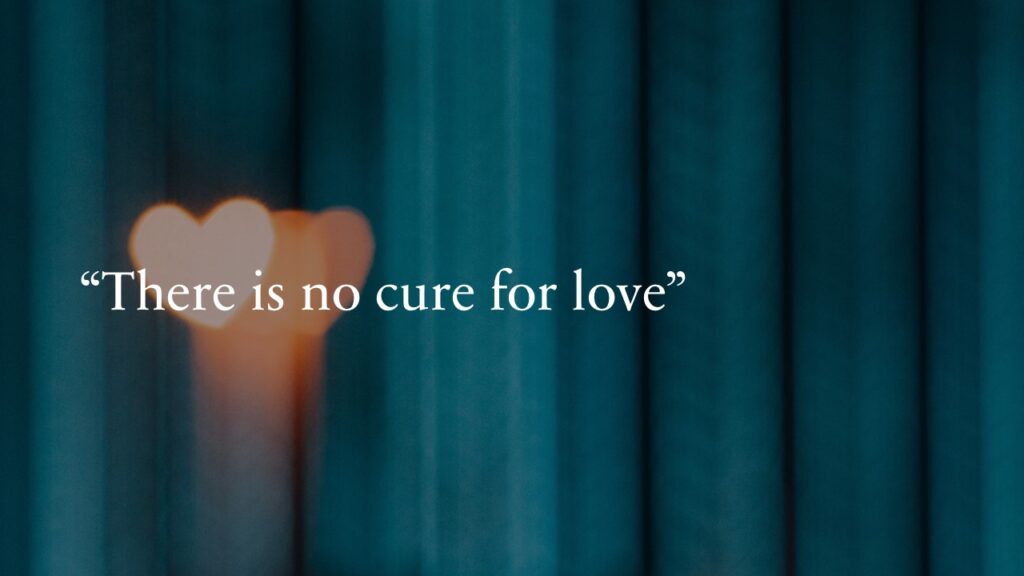As I noted elsewhere, the Fulbe people of West Africa believe that love is a defiant emotion that should be avoided, suppressed, or at least not expressed. And this negative view of love is cross-culturally present in many other societies as well. Besides the Fulbe culture, this belief about love madness is shared by other Muslim societies in the world (Regis, 1995).
The Mysterious and Malicious Power of the “Ishq”
The Arabic word “ishq” has been widely used in other languages of the Muslim world, referring to passionate love. Old medical textbooks of the Islamic world portrayed “ishq” as a mixture of psychic and physical illnesses. Here is an example of how the medieval Islamic medical thought described this state of mind and soul:
“It exceeds the limit of mere inclination and [normal] love and, by possessing the reason, causes its victim to act unwisely. It is blameworthy and ought to be avoided by the prudent”
(Dols, 1992, p.319).
Islamic theology is deeply entwined with the idea that madness results from ardent love. This idea affects how folk tales portray characters. Like Romeo and Juliet in Europe, the tale of Qays and Lila and their tragic love has become a classic story in Islamic literature.
While both tales depict star-crossed lovers, the Islamic one depicts Qays as a “majnun,” or a lunatic (Dols, 1992, p. 332). The madness evolving from the experience of passionate love is a pan-Islamic theme.
When He or She Is Madly in Love
Because of these traditional myths, the Fulbe cultural views toward the experience and expression of love as love-madness look like traditional Islamic thought on “ishq” (passionate love). Full engagement in the feelings of grief, pain, wrath, happiness, or love is like possession with no reason or sense. Many people of Islamic faith think the same way as the Fulbe, with suspicions about passionate and romantic feelings.
Here is another example. The Muslim Tuareg people of Niger, a Berber ethnic group that lives in the Sahara, share the same cultural beliefs about love as the love-madness. “Tuareg cultural values… discourage revealing personal sentiments directly, in particular love preference.”
These cultural attitudes are particularly strongly attributed to Muslim women. Because of these gender stereotypes of inequality, women suffer more than men from tamazai, “an illness of the heart and soul.”
The ailment of tamazai is culturally attributed to a person’s possession by a spirit due to a “hidden love” or not acting on desires. A woman or a man suffering from the malady of tamazai feels withdrawn from people (Rasmussen, 1992, p. 339).
Smadar Lavie, Professor of Anthropology at the University of California, Davis, documented the similar cultural beliefs about passionate love feelings among the Mzeina Bedouin of South Sinai (Lavie, 1990).
The Surprising Cross-Cultural Views on Love as Madness
The Islamic religious beliefs explain the cultural similarities in the attitudes toward love of the Fulbe, Tuareg, and Mzeina people (Lavie, 1990; Rasmussen, 1992; Regis, 1995; Riesman, 1971).
It is interesting, however, that the same cultural beliefs and comments about passionate love are present in Africa among the Christian ethnic groups of the Igbo people in Cameroon, Gabon, Nigeria, and Equatorial Guinea, as well as the Ijaw people in southeastern Nigeria.
The Cultural Value of Moderation in Love
According to the cultural beliefs of these Muslim and Christian societies in Africa, any emotion is acceptable in moderation. Therefore, an experience of extreme love is insane. The passionate insanity of love can be caused by a love potion or by an excessively strong personal will.
According to their cultural views, men and women in a state of love are affected by forces that are beyond their conscious control. The “love syndrome” is more about exaggeration in the perception and behavior of a lover than about deviation. These are inherent symptoms of passionate love. The overwhelming power of love can be conceived as an external or internal force. Anyway, they limit people’s ability to perceive and behave appropriately (Rasmussen, 1992; Regis, 1995).
One can see the parallels between the social restrictions that these societies place on expressing anger, pain, grief, and affection for children and the cultural constraints on romantic and passionate love. Both groups of feelings are normal emotional experiences when they are in moderation.
When People Indulge Emotions Excessively and Obsessively
Otherwise, when men and women indulge in emotions excessively and act compulsively, the tyranny of emotion can cause a psychological disturbance in both men and women. This internal imbalance prevents them from fully participating in the daily lives of their family and community.

